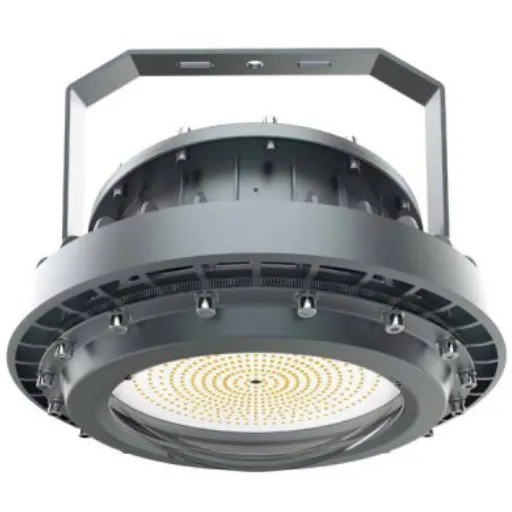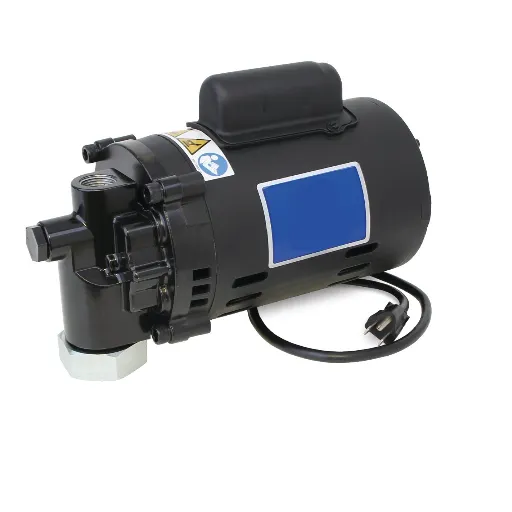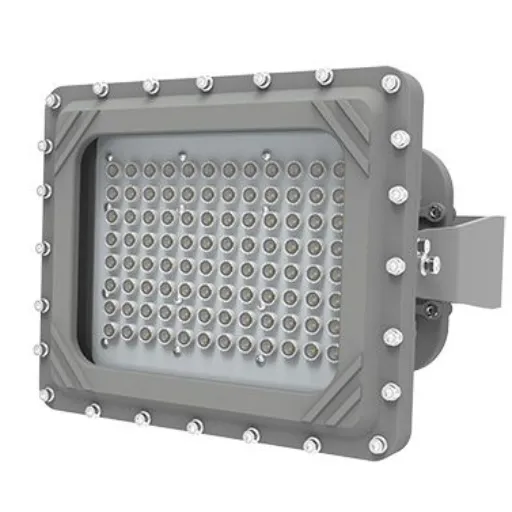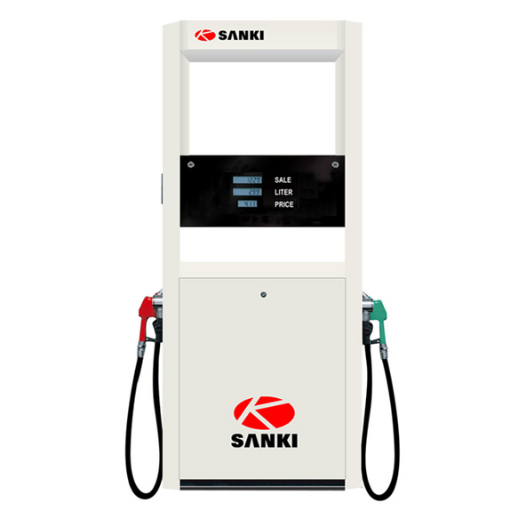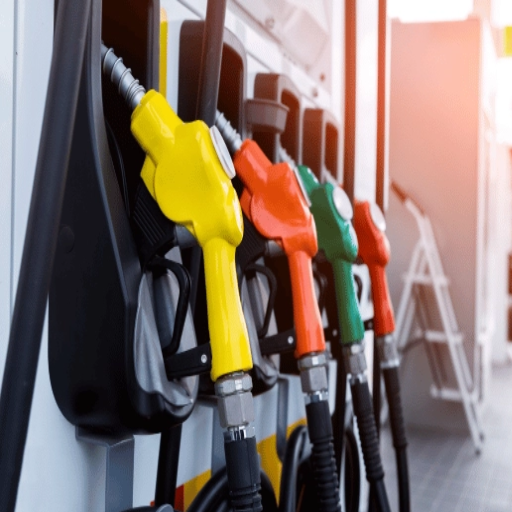Overview of Commercial Fuel Dispensers
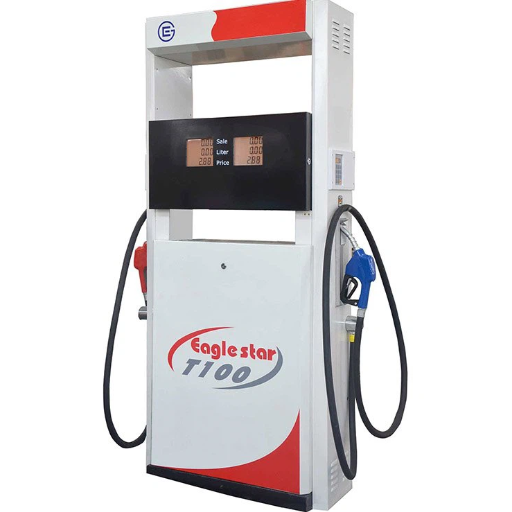
Fuel dispensers are foremost required in fuel retail operations to efficiently and accurately supply fuel to automobiles. Fuel dispensing systems generally consist of a pump, a hose, and a nozzle mechanism with metering systems to ensure accurate measurement of fuel. A modern dispenser is equipped with digital display systems, payment integration, and communication features, allowing for easy transactions and providing customers with an added advantage. Therefore, they would have to be very durable and reliable, thereby ensuring no disruptions ever occur at any point in operating the fuel station.
What is a commercial fuel dispenser?
A commercial fuel dispenser is a specially designed dispensing machine used to deliver gasoline, diesel, or some other type of liquid fuel to a filling station or fleet. The dispenser transfers fuel quickly and efficiently, while also serving as one of the crucial interfaces that ensures correct metering and secure transactions. Modern fuel dispensers incorporate the most advanced technologies to address the complex needs of commercial fuel distribution in a fast-paced environment, featuring precision flow meters, electronically controlled pumps, and automatic control and monitoring systems.
The dispenser systems feature digital readouts that display the volume and price of fuel. Some models have integrated payment terminals that accept payment through smart cards, credit cards, mobile phone payments, or indicate the number of RFID tags for fleet management purposes. They are constructed from materials designed to withstand harsh weather conditions, allowing the dispensers to operate wherever needed, regardless of environmental settings.
Reduction in fueling times with automated dispensers featuring IoT connectivity
Statistics published today highlight the growing importance of sophisticated dispenser systems. Many of them come with some form of connectivity, including IoT, enabling remote monitoring and diagnostics to maximize uptime and efficiency. Industry data indicate that the fuel dispenser market is poised for significant growth opportunities, driven by increased demand for energy-efficient fueling equipment and the introduction of advanced automation technologies.
The presence of hazards ensures safety, as the modern dispenser is designed to adhere to regulatory standards, including explosion-proof construction and flow control, to prevent spills and overfills. The commercial fuel dispenser prohibits the delivery of fuel in both retail and industrial sites.
Types of Commercial Fuel Dispensers
Commercial fuel dispensers come in various types, each catering to different types of fueling operations in the industry. The main types are:
- Suction Fuel Dispensers: These dispensers are ideal for smaller operations that require fueling. They use suction pumps that draw the fuel directly from underground tanks. They are inexpensive and simple in design, making them suitable for low-volume applications.
- Submersible Pump Dispensers: Typically used at high-volume fueling stations, these dispensers feature a submersible-type pump set inside the fuel tank to dispense fuel to the customer. This setup enables faster fueling, particularly at busy commercial and retail fuel stations.
- Single-Hose Dispenser and Multi-Hose Dispenser: Single-hose dispensers provide fuel of one grade, whereas multi-hose dispensers can provide different fuel grades through separate hoses. Multi-hose systems are highly flexible and are typically installed at stations that use various types of fuel.
In modern times, these dispensers can also be equipped with advanced features, such as card payment options, digital displays, and remote monitoring capabilities, making them more user-friendly and efficient in today’s fueling operations.
Importance of Choosing the Right Dispenser
Fuel dispensers optimize operational productivity and safety in fueling operations and are viewed as the best value. Dispensers affect operations, customer expectations, and reliability. Single-hose dispensers may have benefits in reducing fuel transfer from one grade to another, but they will require a lot of space to accommodate a number of these dispensers. Multi-hose types, on the other hand, allow dispensing of different fuel grades through fewer units, thus saving space at fast-moving stations.
Advanced technology inspects fuel dispensers, now necessitating a paramount view demanded by station operators and end-users. According to industry outlooks, integrated card payment systems and remote monitoring features are now standard in many parts of the world, assisting operators during transactions and facilitating the speedy resolution of issues. A digital screen enables customers to navigate easily, while the system with IoT connectivity ensures the collection of real-time data to maximize operational efficiency.
Moreover, environmental regulations and changes to fuel standards also impact the choices of dispensers. A simple example is that devices in many locations must support alternative fuels, such as biodiesel and ethanol blends, or provide electric vehicle charging facilities. Studies suggest that stations whose management invests in versatile dispensers to meet these modern requirements sustain greater customer satisfaction and customer retention rates. Hence, choosing the right type of dispenser serves both immediate operational needs and ensures long-term flexibility in an energy market that is rapidly evolving.
Finding the Right Retail Fuel Dispensers
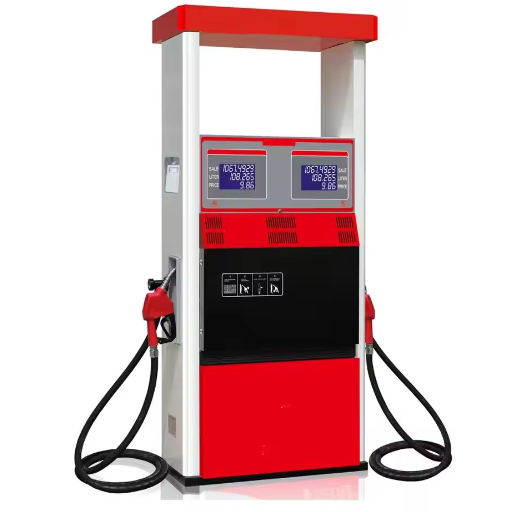
When selecting the right retail fuel dispensers, it is essential to consider both current operational needs and those that may arise in the future. Here are some significant considerations:
- Fuel Compatibility: Dispenser units should be compatible with traditional fuels and alternative energy options, such as biodiesel, ethanol, and electricity, providing the flexibility to meet the growing needs of customers.
- Technology Integration: Modern systems, integrated payment mechanisms, digital displays, and remote monitoring can enhance an efficient operational experience and a positive customer experience.
- Durability and Maintenance: The dispenser should be designed and manufactured from durable materials that can withstand heavy usage and are also easily maintainable to minimize downtime.
- Scalability: Systems that can be easily upgraded should be selected for compatibility with evolving fuel technologies over time.
Keeping these in mind will increase customer satisfaction, allow for adaptability, and present an organization with a lasting competitive advantage in a dynamic energy market.
Factors to Consider When Choosing a Dispenser
Energy Efficiency
Modern dispensers are increasingly designed to conserve energy and reduce operational costs. For instance, utilizing a high-efficiency fuel pump or EV charger will save energy and, thus, revenue. It is estimated that energy-efficient systems reduce costs by approximately 30%, making such systems wise investments for both short-term and long-term savings.
Technological Integration
These dispensers offer enhanced management and monitoring capabilities through technology integration, including IoT and real-time data analytics. This may include tracking fuel consumption, performing analysis on system diagnostics, or monitoring customer behavior to optimize service. According to a new trend, the smart fuel dispenser market is projected to experience a 10% CAGR until 2028.
Environmental Impact
Environmentally-friendly dispensers must, therefore, meet consumer sustainability demands. Environmental agencies report that fuel stations utilizing green technology have experienced increased customer retention, as many base their decisions on sustainability.
Payment System Versatility
It is essential to consider that these dispensers can accommodate various payment methods, the most common being contactless NFC, mobile payments, and traditional cards. As digital payment methods become increasingly common, the lack of such a feature could preclude dispensers from serving a large customer base.
Safety Standards and Regulations
These are necessary to ensure compliance with local and international safety standards. Discounters should incorporate safety features, such as an emergency shut-off system, and hold certifications like UL or ISO standards to minimize risks and ensure the safety of all users.
Cost Analysis and ROI
Businesses should analyze upfront investment vis-a-vis long-term ROIs. For example, the initial purchase of an automated dispenser system may seem costly, but it can ultimately mitigate labor costs and generate greater efficiencies.
The integration of these considerations into the decision-making process leads to the selection of dispensers that offer functionality in line with current market trends and customer expectations.
Comparing Different Models and Brands
When evaluating dispenser models and brands during the purchasing decision, factors such as functionality, durability, price point, and user feedback must be considered to make a thoroughly informed decision. High-capacity dispensers, such as the XYZ Pro5000, designed for heavy use in large commercial settings, offer 50% more capacity than standard models, reducing the frequency of refills. At the same time, smaller-scale models like the ABC Compact Mini are well-suited for smaller spaces where aesthetics and saving space are considered valuable factors.
| Brand Category | Price Range | Key Features | Durability |
|---|---|---|---|
| Brand A (Premium) | $150 – $200 | Touchless technology, antimicrobial surfaces | High-end materials |
| Brand B (Budget) | $70 – $100 | Simplicity and reliability focus | Standard construction |
| Brand C (Smart) | Premium range | IoT connectivity, mobile app integration | 40% less maintenance downtime |
More longevity offered by stainless steel models compared to plastic models
In some industrial settings, the IoT is also utilized in yards, enabling real-time data monitoring of dispenser usage and refill levels. Take, for example, Brand C’s SmartDispense, which, according to user data, diminishes maintenance downtime by 40% if connected to a mobile app. Allying with these advanced weighing features brings particular benefits to the operational efficiency of the business.
Carefully comparing these mechanism attributes allows a business to relate its particular need for either cutting-edge technology, cost-effectiveness, or robust performance to a specific product.
Where to Find Reliable Suppliers
Reliable suppliers are crucial when businesses try to streamline operations and maintain consistent quality. The solution is to restrict the search to a supplier with a good reputation in the industry and verified reviews. For instance, ThomasNet and platforms like Alibaba and Global Sources provide businesses with the opportunity to work with well-vetted suppliers who have detailed company profiles, reviews, certificates, and customer feedback.
Of B2B buyers prefer personal interaction during trade events for informed decisions
Trade shows and exhibitions are also considered vital, as they allow face-to-face meetings with suppliers and permit businesses to evaluate product samples on the spot. Recent reports suggest that 80% of all B2B buyers prefer to interact personally during trade events to make well-informed buying decisions.
Many other companies benefit from aligning themselves with suppliers who offer transparent terms and scalable solutions. These could be suppliers holding ISO certification, indicating that internationally recognized quality standards are respected. Recent industry statistics suggest that 70% of businesses consider supplier accreditation a very significant factor in their decision-making process.
By utilizing digital platforms and in-person evaluation opportunities, they can ensure that these suppliers are genuinely aligned with their operational goals and values.
Getting a Quote for Commercial Fuel Solutions
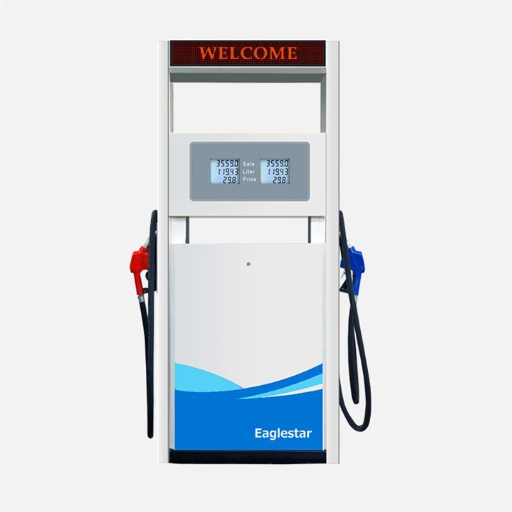
If you are interested in obtaining a quote for commercial fuel solutions, start by contacting reputable fuel providers and providing them with essential information about your company’s needs. Be ready to give information such as fuel type, estimated volume to be used, frequency of delivery, and locations of these deliveries. Many providers have become so advanced that they include online forms for quote requests or offer customer service representatives to support your needs. Be sure to compare multiple quotes to check not only pricing but also contract specifics and other services such as delivery or maintenance options. Also, verify that providers are trustworthy candidates to ensure reliability and quality.
Steps to Request a Quote
Understanding Pricing Structures
Depending on the industry, the pricing structure might differ vastly; thus, management needs to consider this aspect. Some of the more familiar structures include cost-plus pricing, value-based pricing, or tiered pricing. Cost-plus pricing essentially attempts to set a price by adding a fixed percentage markup to production costs; it is simple theoretically, but may lack competitiveness since the cheapest option will often prevail. Value-based pricing is gaining greater acceptance in sectors such as computer software and luxury goods because it considers what the buyer perceives as the value of a product.
Higher revenue growth rates for companies using value-based pricing strategies
Data show that businesses following a value-based pricing strategy generally realize better profit margins. For example, a software study revealed that companies that applied this pricing strategy showed revenue growth rates that were 25% higher than those of companies that were traditional price takers. Other instances of tier pricing occur mostly among subscription services, where packages are designed to cater to differing customer needs—such as basic, premium, and enterprise.
Another critical factor in pricing is dynamic pricing, where adjustments are made based on demand, competition, or market trends. Retailers, such as e-commerce platforms, have successfully leveraged dynamic pricing, increasing profit margins by an average of 10-30% through real-time pricing updates driven by analytics tools. Understanding these structures enables businesses to optimize their strategies, striking a balance between profitability and customer value.
Negotiating Terms and Conditions
From setting terms and conditions, negotiation ensures that a fair and mutually beneficial arrangement is reached between the parties. Strategically well-planned negotiations typically result in more effective long-term partnerships. While discussing terms, a prime objective should be to clarify payment terms, delivery schedules, liability clauses, and mechanisms for resolving disputes.
The data indicate that when negotiations begin with transparent communication and some flexibility, there is a 30% greater chance that businesses will reach agreements that foster collaboration and trust. Benchmark data can have enormous value during negotiations, for it enhances the credibility and clarity of the discussions.
For instance, if the parties negotiate delivery schedules that relate to standard lead times in the sector, while letting payment terms be in accordance with industry standards (e.g., Net 30, Net 60), then so many conflicts can be avoided.
Technology is playing an increasingly important role in contract negotiation. Contract lifecycle management software and analytics-based insights are utilized by businesses to identify trends, key performance indicators, and track and adjust terms in real-time. Innovations such as these expedite the negotiation process while also mitigate legal risks by ensuring compliance with relevant laws.
The proper integration of preparation, open communication, and data-driven tools can shape the structure of sound and balanced agreements, ensuring the development of fruitful business relationships.
Benefits of Modern Commercial Fuel Dispensers

In the modern day, commercial fuel dispensers offer greater efficiency, accuracy, and safety. They are designed to fill fuel for the customer; faster fill-ups imply less waiting on the part of customers and less fuel spilling into the gutters. Most fuel dispensers incorporate leak monitoring systems that alert operators to any irregularities, ensuring these machines comply with environmental standards. While being disturbed from custom payment solutions that foster a hands-on experience for consumers, they also offer superior and established construction for reliability and minimal maintenance. Features in these machines make them ideal for commercial fueling operation applications.
Improving Efficiency and Speed
By combining cutting-edge technology and data analytics, these fuel dispensers have truly revolutionized the very definition of operational efficiency. Industry reports claim that such automated fuel dispensers, featuring state-of-the-art sensors and IoT connectivity, can reduce fueling times by as much as 30% compared to the traditionally expected times. Despite these features gathering real-time data on how customers average their usage, businesses use such information to streamline pump availability and optimize traffic flow at congested stations.
Shorter checkout times with touchless payment integration
With the application of touchless payments, transactions can be expedited; checkout times are reportedly 40% shorter compared to conventional payment methods. Through integration, predictive maintenance algorithms embedded within dispensers help detect and resolve issues before they cause downtime, thereby increasing reliability. These technologies make shopping more pleasant for customers while increasing sales and reducing costs for businesses.
Enhancing Customer Experience
Modern technology has revolutionized the customer experience, enabling more personalized and smoother interactions. AI-based product recommendations have significantly increased customer satisfaction and conversion rates. A study suggests that sales can be increased by 20-30% when a business implements personalized recommendations. Furthermore, chatbots and virtual assistants, which have become quite responsive and aware of context, handle customer queries 24/7 on more than 80% of commonly asked queries without requiring human intervention.
With contactless payment systems and mobile wallets, convenience in transactions reaches its peak. Reports indicate a 35% increase in customers opting for businesses that provide these options. Integrated consumer loyalty programs will enable corporations to reward consumers effectively, resulting in a 15% increase in repeat purchases.
Adoption of these technologies results in an entirely engaging and intuitive customer journey, fostering trust and loyalty that leads to growth.
Ensuring Compliance and Safety Standards
Any business needs to adhere to these standards to be trusted and ensure its operation has longevity. Maintaining a rigorous approach to data security measures thus became crucial, especially with incidents increasing by 68% in the last three years, as cyber threats targeting customer data have become more prevalent. Regarding highly sensitive information, industries, or in some cases, specific operations, such as those dealing with finance or healthcare, will have regulations like GDPR or HIPAA imposed upon them to ensure customer confidence, rather than merely meet legal compliance requirements.
Decrease in workplace injuries when investing in robust safety measures
Another critical aspect remains workplace safety. According to current findings, investing in robust safety measures yields a 22 percent decrease in workplace injuries, leading to improved morale and productivity among employees. Applying technologies that utilize AI-backed monitoring systems and provide instant alerts further enhances safety performance. From a compliance and safety standpoint, businesses can save themselves significant legal costs and, in effect, win stakeholder favor.
Future Trends in Fuel Dispenser Technology
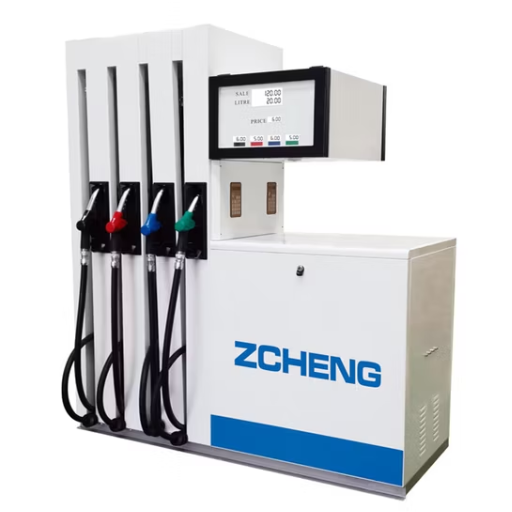
The fuel dispensing industry is situated in rapid evolution with advancements in technology. One significant trend is the integration of digital payment systems, allowing for seamless transactions through phone apps or contactless cards. Operations with IoT-enabled devices enable real-time monitoring and predictive maintenance, reducing downtime and operational costs. With better UI and touchscreen, customer interaction is gaining an easier and faster way.
Sustainability is therefore becoming a greater factor, with dispensers being designed for alternative fuels, such as hydrogen and biofuels. There is more integration of electric vehicle (EV) charging stations with conventional fuel dispensers in the realm of diversified energy solutions. Lastly, AI and machine learning are set to transform the front and center operations, fueling dispensing speed optimization, potential issue detection, and overall safety protocol improvements.
Emerging Technologies in Fuel Dispensing
Technologies in fuel dispensing are focused on efficiency, sustainability, and consumer convenience. Bright fuel dispensers integrate with IoT setups, enabling station operators to monitor and manage fuel inventory in real-time, thereby preventing downtime in operations. With the burgeoning electric and hydrogen-powered vehicle market, dispensers are also integrating multi-fuel compatibility —that is, combining an EV charging port and a hydrogen refueling nozzle. Hydrogen fueling particularly benefits from modern nozzle technology, which enables fast, safe, and high-pressure transfers. Moreover, AI-based solutions now enable predictive maintenance of fuel pumps, leading to energy savings and compliance with stricter environmental regulations. These innovations help in a smooth transition to cleaner energy solutions while promoting operational efficiency.
Impact of Electric Vehicles on Fuel Dispensers
As electric vehicles (EVs) increase their share in the transportation sector, a noticeable shift occurs in the traditional dispensing of fluids. While EVs do lessen the reliance on fossil fuels, they instead push the development of an adequate charging infrastructure, in comparison to conventional fuel pumps. This exchange can lead to a gradual decline in the demand for fuel dispensers; however, it also presents an opportunity for diversification, such as integrating EV charging stations into existing fuel pumping networks. I believe that working with this evolving force is crucial to catering to consumer demand and facilitating the implementation of more sustainable energy solutions.
Sustainability Practices in the Fuel Industry
As the fuel industry increasingly adopts sustainability practices, those that prioritize environmental protection and align with the global goal of reducing greenhouse gas emissions are gaining acceptance. Key practices include investing in cleaner energy options, specifically biofuels, hydrogen, and renewable natural gas, to reduce reliance on traditional fossil fuels. Another focus lies on carbon capture and storage to curb emissions in a firm’s operations, coupled with seeking partners for innovation in energy efficiency. Yet another great leap toward greener infrastructure is now realized by integrating EV charging with renewable energy sources (such as solar panels) at global sites. These projects aim to meet the demand from consumers seeking sustainable energy solutions, while also contributing to a low-carbon future.
Key Takeaways
- Modern commercial fuel dispensers are essential for efficient, accurate, and safe fuel distribution operations
- Technology integration including IoT, digital payments, and predictive maintenance significantly improves operational efficiency
- Energy-efficient systems can reduce operational costs by approximately 30%
- The industry is rapidly evolving toward sustainability with support for alternative fuels and EV charging integration
- Proper supplier selection and negotiation are crucial for long-term operational success
Conclusion
The commercial fuel dispenser industry continues to evolve rapidly, driven by technological advancements, environmental considerations, and changing consumer demands. Modern dispensers offer unprecedented levels of efficiency, safety, and customer experience through features like IoT connectivity, touchless payments, and predictive maintenance capabilities. As the energy landscape shifts toward sustainability, fuel dispensers are adapting to support alternative fuels and integrate with electric vehicle charging infrastructure.
For businesses in the fuel retail sector, investing in the right dispenser technology is crucial for maintaining competitiveness and meeting evolving customer expectations. By carefully considering factors such as fuel compatibility, technology integration, durability, and scalability, operators can select systems that not only meet current needs but also provide flexibility for future requirements.
The future of fuel dispensing lies in smart, connected systems that optimize operations while supporting the transition to cleaner energy sources. As this transformation continues, businesses that embrace these innovations will be best positioned to thrive in the evolving energy marketplace.
Reference Sources
Frequently Asked Questions (FAQs)
What Is a Commercial Fuel Dispenser Product?
A commercial fuel dispenser is a highly specialized machine designed for selling fuel to customers in commercial settings, such as gas stations and fleet fueling stations. These dispensers can work with all imaginable fuels, including petrol, diesel, and refueling for more efficient and accurate operations during the actual filling process.
How Do I Install a Gilbarco Veeder-Root Dispenser?
Installing the FlexLine typically involves several steps, including site preparation, electrical and plumbing connections, and hooking up with other systems. One should always refer to the manufacturer’s instructions to ensure all safety requirements are fulfilled and, if necessary, hire professionals to perform a proper installation of our trusted dispensers.
What are the features of the Gilbarco Encore frame and door?
The Gilbarco Encore Classic frame and door feature robust construction, enhancing durability and beauty. Configured to accommodate a wide range of configurations, the frame ensures a seamless installation with our platform dispensers. Maintenance, as well as service for the door construction, is straightforward, offering long-term reliability.
What does the Encore Ultra-Hi Flow dispenser offer?
The Encore Ultra-Hi Flow dispenser is engineered for high-volume commercial use. It offers faster fueling speeds, reducing customer waiting time, while being equipped with modern technology to ensure exact flow measurement. This dispenser is ideal for businesses seeking to enhance customer satisfaction and operational efficiency.
How do I get a quote for commercial fuel dispensers?
You can obtain a quote for commercial fuel dispensers by visiting our website and completing the relevant inquiry form. This way, our team reviews your specifications and can offer you a competitive, tailored price, ensuring you get what truly suits your needs, including installation and maintenance options.
Why is proper installation necessary?
Proper installation of fuel dispensers is crucial because it ensures safety, compliance with legislative standards, and optimal performance. The flawless installation of our trusted dispensers will prevent leaks or mishaps, thereby saving on repair costs and downtime in the ever-changing fuel industry.
Are there multiple options for fuel dispensers for office use?
There are various fuel dispensers available in different sizes that can be used for office purposes. Several models, tailored to your fueling requirements, handle multiple forms of fuel and volumes, ensuring your office is equipped with the necessary equipment to handle fuel efficiently and effectively.
What is the role played by POS systems in commercial fuel dispensers?
POS systems sit at the very heart of a commercial fuel dispenser operation, handling transactions and inventory preparation. They work in conjunction with fuel dispensers to track sales and fuel levels in real time, thereby providing smoother operation and enhanced customer service in commercial fuel environments.

